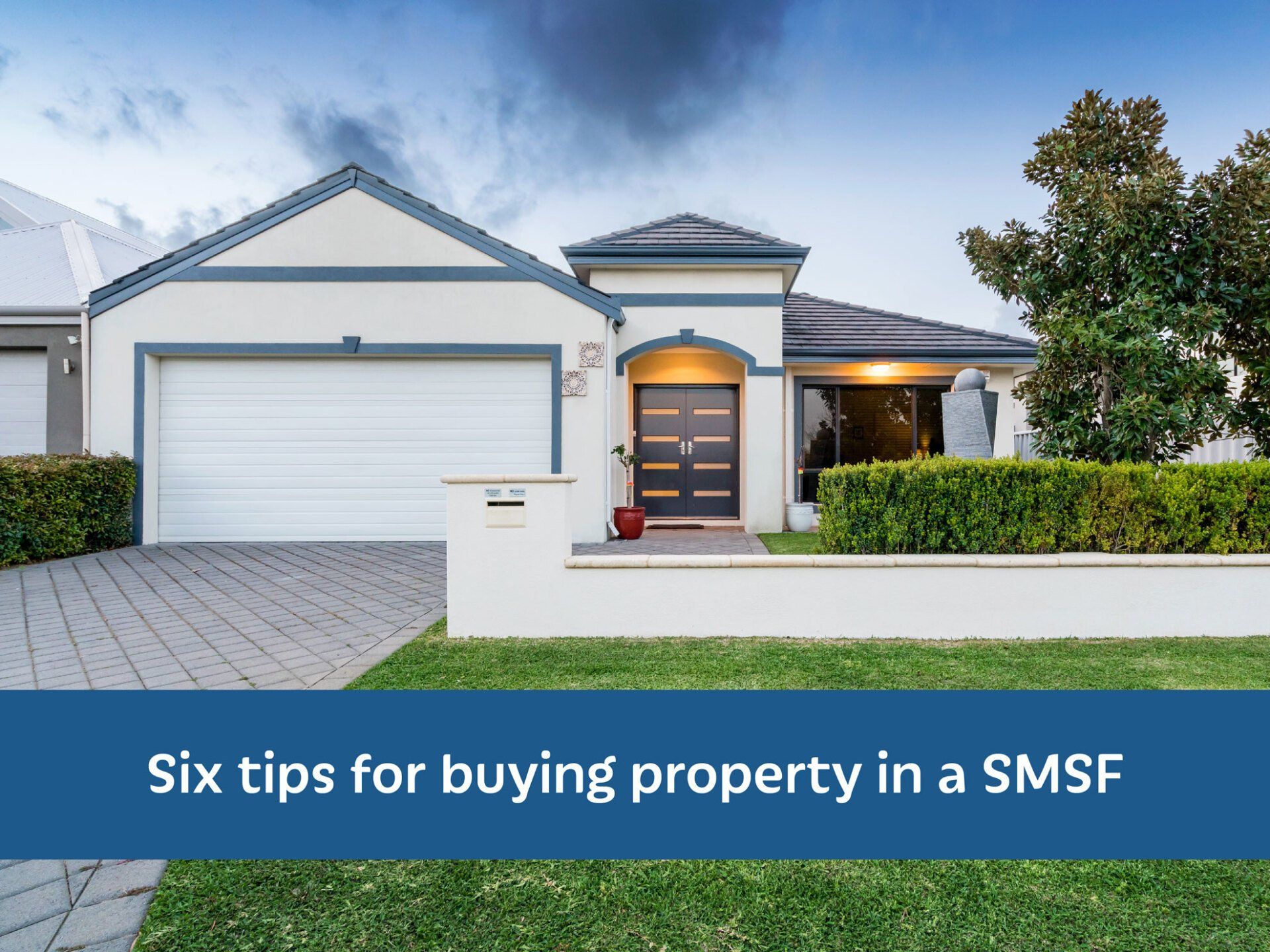Six tips for buying property in a SMSF

In 2017, Ready to Retire conducted a study on Australian retirement. They discovered that the average Australian worker has around $200,000 less than they will need to live comfortably when they leave the workforce. What’s more, a mere 22% of Australian workers believe they will have enough superannuation funds upon retirement to live the lifestyle they’ve long dreamed of. That’s scarily low.
However, what we’ve learned from this, is that we can make strategic investment decisions to help support a healthy financial retirement. One of these options includes investing in property with your super. Although most people know they can use super to buy a property, the details on how exactly to do this remain a little unclear, leaving many Australians to throw this option in the “too-hard basket”.
Let’s lay it out
Like all our work at Ascent Accountants, we’re here to make things easier for you. Today, we’re going to lay out six details to consider when deciding whether investing in property with your SMSF is the right move for you, your lifestyle, and your retirement goals.
1. Borrow money to purchase property in superannuation.
If you don’t have enough to buy the investment property you want, that’s okay. Since 2008, superannuation held in a SMSF can be used to borrow money for property purchase — up to 70% of the property’s value.
Upon completion of the loan repayment, the property’s ownership can be legally transferred to the SMSF. There are a couple of catches, but all things considered, we think they’re pretty reasonable and achievable:
- To purchase the property and to obtain the loan, you must setup a Bare Trust and a Custodian company which the superfund is the legal owners of.
- If you have 30% of the purchase price in your SMSF, the property can be used as security by the bank and you can take out a “limited resource loan”. The SMSF then makes the loan repayments.
- If there is a default on the loan, your other assets in the SMSF are generally protected from the standard debt recovery and bankruptcy proceedings. The lender only has recourse to the property itself.
2. Keep a liquidity buffer.
If you’re buying property in superannuation, make sure you keep a liquidity buffer of cash and/or shares. Before lending to you, banks check to ensure you have this buffer in place (it should be at least 10% of the value that you’re intending to borrow).
This protocol is actually designed to protect you — because superannuation is key to retirement, the government carefully regulates what can and can’t be done with it. They don’t want people risking their superannuation on poor investments.
3. Use the rental income to repay your loan.
If you purchase a property with your SMSF, you can’t live in it until you retire. This is to ensure people are actually using their SMSF to invest. As such, the property you buy can be rented out and generate a passive income for you. Most people purchase an investment property and use this income to repay the loan, which is what we suggest, too.
Some people choose not to live in the house ever, but rent it out for a period and then sell it for a profit (hopefully) upon retirement.
4. Buy a rentable property.
Building on the last point, it’s important to do your research and purchase a rentable property that’s projected to make a profitable return. Consider public transport, amenities, recreational facilities, medical centres and schools, and so on, as well as the average rental rates in the local area.
You’ll also need to shop around for the best loan, engage professional real estate agents who know the area, and take the time to compare viable properties.
5. Enjoy tax efficiencies
One of the attractions of Superannuation is its tax efficiency, which extends to property purchases within superannuation. For example:
- No capital gains tax after retirement.
- If you’re sacrificing salary payments, loan repayments are effectively tax deductible.
- The maximum rate of tax on income after expenses and any capital gains after selling your property is capped at 15%. Standard investors can pay up to 46.5%.
6. Seek professional advice
As buying a property with your super is quite complex, one of the easiest ways to mitigate risk is by seeking professional advice. It’s absolutely crucial that you understand all the risk, are equipped with the right resources, and have the information you need to make an informed decision.
Remember, this could impact your retirement negatively as well as positively (we hope the latter!), so it’s not a decision to make lightly. We can guide you here, and help you make the best possible decisions for your future. When you’re ready, let’s chat.
Need help with your accounting?








